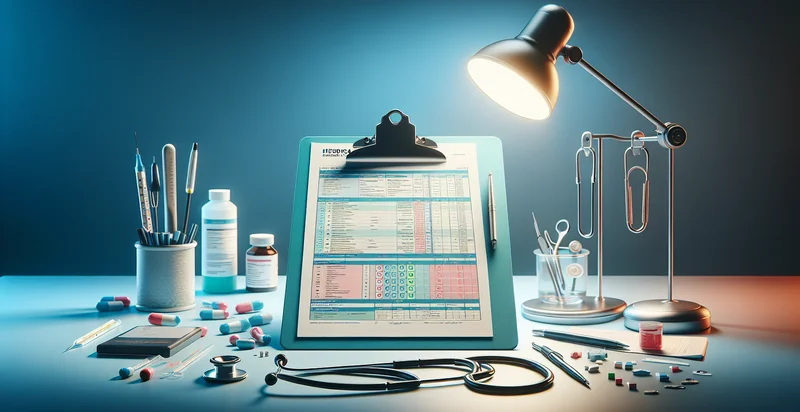Identify medical chart visibility
using AI
Below is a free classifier to identify medical chart visibility. Just upload your image, and our AI will predict if the medical chart is visible - in just seconds.

Contact us for API access
Or, use Nyckel to build highly-accurate custom classifiers in just minutes. No PhD required.
Get started
import nyckel
credentials = nyckel.Credentials("YOUR_CLIENT_ID", "YOUR_CLIENT_SECRET")
nyckel.invoke("medical-chart-visibility", "your_image_url", credentials)
fetch('https://www.nyckel.com/v1/functions/medical-chart-visibility/invoke', {
method: 'POST',
headers: {
'Authorization': 'Bearer ' + 'YOUR_BEARER_TOKEN',
'Content-Type': 'application/json',
},
body: JSON.stringify(
{"data": "your_image_url"}
)
})
.then(response => response.json())
.then(data => console.log(data));
curl -X POST \
-H "Content-Type: application/json" \
-H "Authorization: Bearer YOUR_BEARER_TOKEN" \
-d '{"data": "your_image_url"}' \
https://www.nyckel.com/v1/functions/medical-chart-visibility/invoke
How this classifier works
To start, upload your image. Our AI tool will then predict if the medical chart is visible.
This pretrained image model uses a Nyckel-created dataset and has 2 labels, including Hidden and Visible.
We'll also show a confidence score (the higher the number, the more confident the AI model is around if the medical chart is visible).
Whether you're just curious or building medical chart visibility detection into your application, we hope our classifier proves helpful.
Related Classifiers
Need to identify medical chart visibility at scale?
Get API or Zapier access to this classifier for free. It's perfect for:
- Patient Data Access Control: The medical chart visibility identifier ensures that only authorized personnel can view sensitive patient information. By implementing this function, healthcare organizations can maintain compliance with regulations such as HIPAA, reducing the risk of data breaches and unauthorized access.
- Enhanced Telemedicine Security: In telehealth services, this function can identify and limit medical chart visibility based on patient consent and provider necessity. This increases patient trust while allowing healthcare providers to focus on delivering care without compromising confidentiality.
- Audit Trail Management: The identifier can log who accessed medical charts and when, creating an audit trail that helps in monitoring compliance and security. This assists healthcare organizations in identifying potential misuse or unauthorized access to sensitive patient information.
- Improving Patient Engagement: By controlling chart visibility, healthcare providers can selectively share relevant information with patients, enhancing their engagement. Patients can gain access to their medical history and treatment plans while ensuring unnecessary details remain confidential.
- Customizable Role-Based Access: This function allows healthcare institutions to set customizable access levels for different roles (e.g., doctors, nurses, administrative staff). This targeted approach helps optimize workflow, ensuring that each team member can access only the information pertinent to their role in patient care.
- Integration with EHR Systems: The medical chart visibility identifier can be integrated into Electronic Health Records (EHR) systems to streamline visibility protocols. This enhances data management capabilities, allowing for seamless sharing and access while carefully monitoring visibility based on defined rules.
- Risk Management and Compliance Reporting: By using this identifier, organizations can generate reports to monitor compliance with privacy laws and detect patterns of unauthorized visibility. These reports are crucial for risk management, guiding further training and policy improvements on data handling across the institution.


